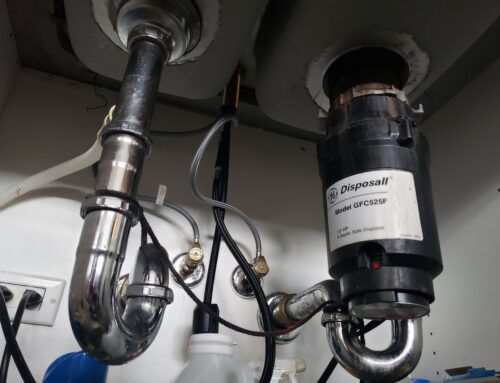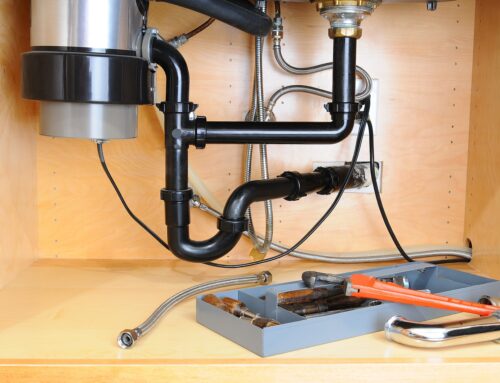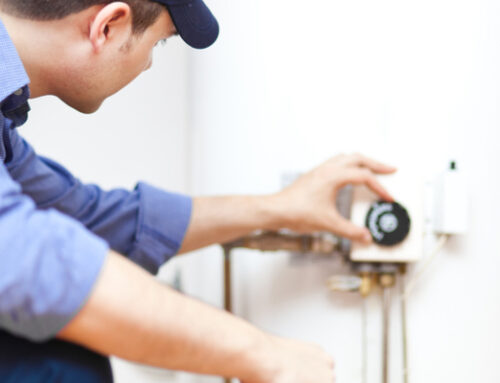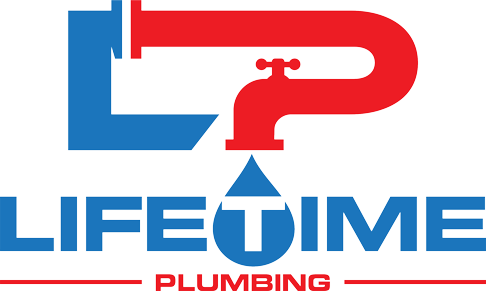Table of Contents
Why is My Water Heater Leaking?
It can be concerning to discover a leak coming from your water heater. Not only can it cause damage to your home, but it can also lead to higher utility bills and even potential health hazards. There are numerous reasons why water heaters can leak. Let’s explore the most common causes.
By understanding the reasons for water heater leaks, you can take the appropriate steps to address the issue and prevent further damage. In some cases, the problem can be fixed with a simple DIY solution, while in others, it may require the assistance of a professional.
Key Takeaways:
- Water heaters can leak for a variety of reasons, including pressure relief valve issues, corrosion and rust, loose or damaged connections, and sediment buildup.
- Promptly addressing leaks is important to prevent further damage and maintain the efficiency of your water heating system.
- If you are unsure of the cause or unable to fix the issue yourself, seek professional assistance.
- Regular maintenance and proper care can help extend the lifespan of your water heater and reduce the chances of leaks in the future.
Pressure Relief Valve
A pressure relief valve is a crucial component in your water heater system. It helps regulate the pressure inside the tank by opening up and releasing excess pressure. Without this valve, the pressure inside the tank could become dangerously high, leading to potential explosions or other hazards.
If you notice water around the base of your water heater, it may be due to a leaking pressure relief valve. This can happen if the valve becomes faulty or damaged, or if it is not properly installed.
To fix a pressure relief valve leak, you can try tightening the valve or replacing it entirely. It’s important to note that this should only be attempted if you have experience working with water heaters and plumbing systems. If you’re not sure how to fix the leak, it’s best to call a professional plumber.
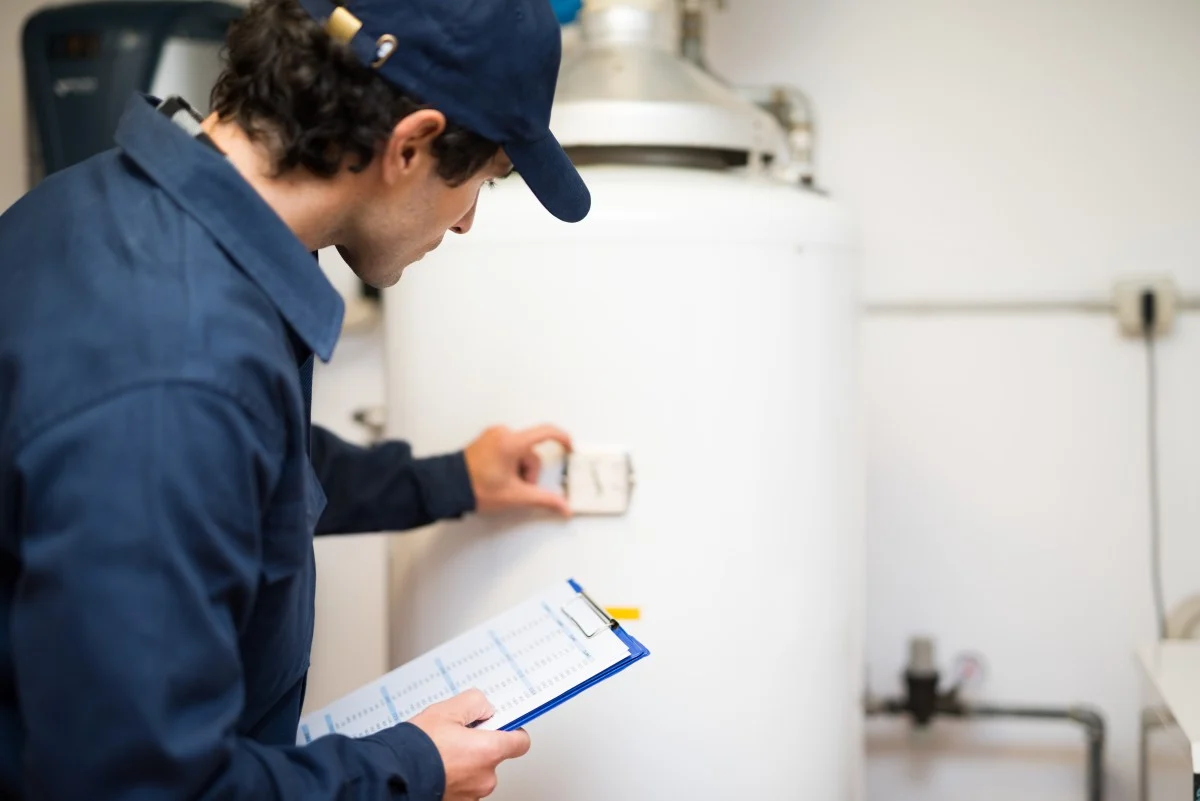
Temperature and Pressure Relief Valve
The temperature and pressure relief valve, commonly known as the T&P valve, is an important safety feature in water heaters. As the name suggests, it regulates the temperature and pressure inside the tank, releasing excess pressure to prevent explosions.
A faulty T&P valve can cause leaks in the water heater. Signs of a leaking T&P valve include water dripping from the valve or a sudden increase in temperature or pressure.
If you suspect the T&P valve is the source of the problem, you should replace it as soon as possible. This can be done yourself or by a professional plumber. It’s recommended to replace the T&P valve every three years to ensure it is functioning correctly.
Never attempt to remove or adjust the T&P valve yourself if you are unsure of what you are doing. This can be dangerous and cause further damage to the water heater.
Corrosion and Rust: Causes and Solutions
One common reason for water heater leaks is corrosion and rust that forms over time on the interior of the water tank. While this can occur in all types of water heaters, it is more prevalent in older units with steel tanks.
Corrosion occurs when the steel of the tank is exposed to the water and air, leading to the breakdown of the metal. Rust occurs as a byproduct of the corrosion process, often appearing as a reddish-brown residue on the tank walls or in the water.
Not only can corrosion lead to leaks, but it can also impact the efficiency of your water heater, causing it to use more energy to heat the water. It may even result in the need for a full replacement of your water heater.
Signs of Corrosion and Rust
There are several signs to look out for that could indicate corrosion and rust in your water heater. These include:
- Discolored water
- Metallic taste in water
- Foul odor in water
- Rust flakes in water
- Visible rust or corrosion on the tank exterior or interior
- Water pooling around the base of the water heater
If you notice any of these signs, it is crucial to address the issue immediately to prevent further damage.
Fixing a Corroded Water Heater
If the corrosion is minor, you may be able to address the issue by flushing the water heater to remove sediment and debris that contribute to its formation. However, if the corrosion is extensive, it may be necessary to replace the entire water heater.
In either case, it is important to consult a professional to determine the appropriate course of action. A plumber or HVAC technician can assess your water heater and provide recommendations for repair or replacement.
Loose or Damaged Connections
Another common reason for water heater leaks is loose or damaged connections. These connections can occur in various parts of the system, including the inlet and outlet pipes, the pressure relief valve, and the heating elements.
Loose connections can result from the natural wear and tear of the system or improper installation. Damaged fittings, on the other hand, can result from exposure to high temperatures or excessive pressure.
If you suspect loose or damaged connections are the cause of your water heater leak, take action immediately to prevent further damage to your system. Follow these steps:
- First, turn off power to the water heater.
- Next, shut off the water supply and allow the unit to cool down.
- Inspect the connections to identify the source of the problem.
- If the connections are simply loose, tighten them gently using a wrench or pliers.
- If the fittings are damaged, they will need to be replaced. A professional plumber can help identify the correct replacement parts and install them correctly.
- Once the fittings are fixed or replaced, turn the water supply and power to the heater back on.
- Finally, monitor the system for any signs of further leaking, such as puddles of water, wet spots on the floor, or unusual sounds and smells.
Properly securing loose or damaged connections can prevent leaks and ensure the safe and efficient functioning of your water heater. In addition to attending to specific problems, it’s important to schedule regular maintenance appointments with a licensed plumber to ensure your water heater is functioning properly and to address any potential issues before they become larger problems.
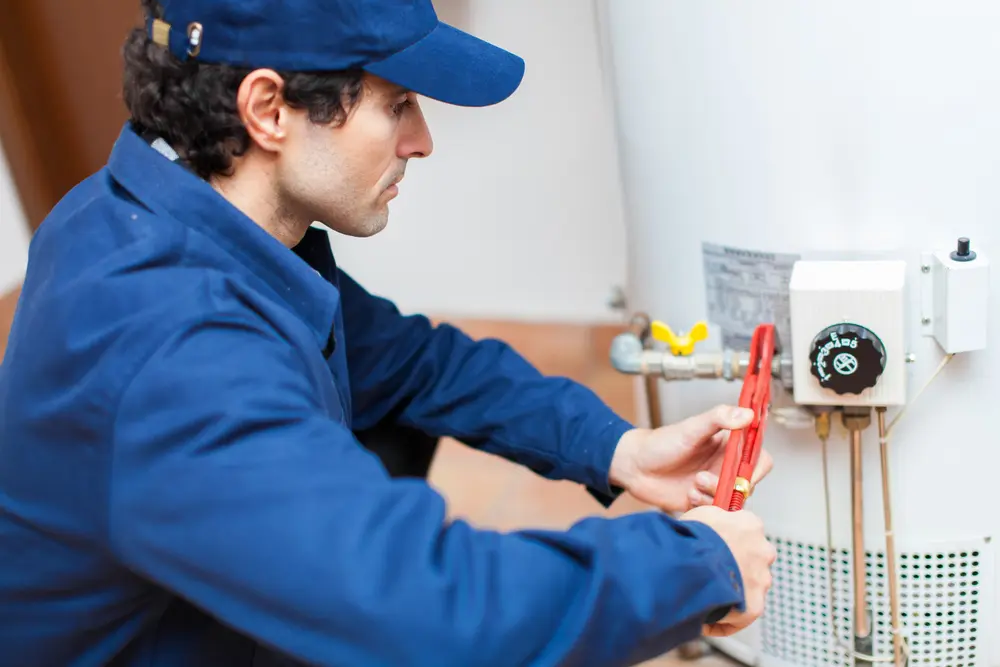
Internal Tank Damage
The internal tank of a water heater can sustain damage from a variety of causes, including age, wear and tear, and sediment buildup. Unfortunately, a damaged tank can lead to leaks, potentially causing water damage and costly repairs.
If you suspect that your water heater tank is leaking, there are a few key signs to look out for:
- Water pooling around the base of the unit
- A noticeable decrease in hot water supply
- Strange noises coming from the tank
If you notice any of these signs, it is important to act quickly to prevent further damage. In some cases, repairing the tank may be possible. However, if the damage is significant, you may need to replace the entire unit.
When deciding whether to repair or replace your water heater tank, consider the age of the unit, the extent of the damage, and the cost of repairs versus replacement. A professional plumber can help you make an informed decision and provide guidance on the best course of action.
Excessive Water Pressure and Water Heater Leaks
High water pressure can lead to leaks in your water heater. Water pressure should be between 40-60 psi. Excess pressure can cause your water heater to operate inefficiently and put stress on your pipes, leading to leaks.
If you suspect high water pressure is causing issues with your water heater, there are a few steps you can take to reduce the pressure:
- Check your water pressure using a pressure gauge
- If your water pressure is too high, install a pressure reducing valve
- If you already have a valve installed, adjust it to reduce the pressure to the appropriate level
- If you are unsure how to install or adjust a pressure reducing valve, consult a professional plumber
Reducing water pressure can prevent leaks and prolong the lifespan of your water heater. It is important to regularly check and maintain proper water pressure to ensure the efficient operation of your plumbing system.
Sediment Buildup
One of the common causes of water heater leaks is sediment buildup inside the tank. It is essential to understand how sediment forms, signs of sediment buildup, and steps to flush the water heater.
What is Water Heater Sediment?
Water enters the heater tank and accumulates small mineral particles during the heating process. Over time, the minerals settle at the bottom of the tank and form sediment layers. These sediments can lead to a variety of issues, including decreased efficiency, reduced water flow, and leaks.
Signs of Water Heater Sediment Buildup
There are some visible signs of sediment buildup that you may notice:
- Unusual noises coming from the heater
- Reduced hot water supply
- Cloudy or discolored water
- Increased energy bills due to decreased efficiency
If you notice any of these signs, it’s time to check for sediment buildup inside the tank.
How to Flush Your Water Heater
The best way to prevent sediment buildup is to regularly flush your water heater.
Here are the steps to flush your water heater:
- Turn off the power supply or gas valve of your water heater.
- Turn off the cold water supply valve that feeds water to the heater tank.
- Attach a hose to the drain valve located at the bottom of the tank.
- Place the other end of the hose in a drain or outside area.
- Open the drain valve and allow the tank to empty completely.
- Close the drain valve and turn on the cold water supply valve.
- Let the tank refill until water flows out of the open faucet.
- Turn on the power or gas valve of your water heater.
Find our more about how to flush sediment from your water heater!
Flushing your water heater once a year can increase its lifespan and prevent leaks caused by sediment buildup. If you’re unsure about performing this task, it’s best to contact a professional plumber.
Conclusion
In conclusion, it is crucial to promptly address any leaks in your water heater to prevent further damage and ensure the efficiency of your heating system. As we have seen, the common causes of water heater leaks include a faulty pressure relief valve, temperature and pressure relief valve, corrosion and rust, loose or damaged connections, internal tank damage, excessive water pressure, and sediment buildup.
To avoid leaks in the future, it is important to maintain your water heater with regular cleaning and inspection, as well as properly managing the pressure and temperature of the water supply. Additionally, if you are unsure of the cause or unable to fix the issue yourself, it is always recommended to seek professional assistance.
At Lifetime Plumbing, we prioritize the safety and satisfaction of our customers, offering timely and expert solutions to keep your home and water heating system in optimal condition. Contact Lifetime Plumbing, your professional plumber in Chicago, for reliable water heater repairs you can trust.
Remember, taking care of your water heater will not only prolong its lifespan but also save you from the hassle and expenses of dealing with leaks and other issues.
FAQ
Why is my water heater leaking?
There can be several reasons for a water heater leak. It could be due to a faulty pressure relief valve, temperature and pressure relief valve, corrosion and rust, loose or damaged connections, internal tank damage, excessive water pressure, or sediment buildup. Identifying the specific cause is important in determining the appropriate solution.
What should I do if my pressure relief valve is leaking?
If you suspect that the pressure relief valve is the cause of the leak, you should first check if it is properly attached and not obstructed. If the valve is faulty, it may need to be replaced. Contact a professional if you are unsure or need assistance in fixing the issue.
How do I know if my temperature and pressure relief valve is the problem?
Signs of a faulty temperature and pressure relief valve include water leaks from the valve itself or excessive water discharge during heating. If you notice these symptoms, it is advisable to have the valve inspected and replaced by a professional if necessary.
How can I fix a corroded water heater?
Corrosion in a water heater can lead to leaks. If you suspect corrosion, it is best to consult a professional. In some cases, they may recommend replacing the water heater tank. Regular maintenance and flushing can help prevent corrosion and extend the lifespan of your water heater.
What should I do if I have loose or damaged connections?
If you have loose or damaged connections in your water heater system, you should first turn off the power and water supply. Inspect the connections for any signs of damage or looseness and tighten or replace them as necessary. Seek professional help if you are unsure or need further assistance.
Can a leaking water heater tank be repaired?
Internal tank damage in a water heater typically requires replacement rather than repair. If you suspect that the tank is the cause of the leak, it is recommended to contact a professional who can assess the situation and advise on the best course of action.
How can I reduce excessive water pressure that may cause leaks?
To reduce excessive water pressure, you can install a pressure regulator on your main water line. This device will help maintain a safe level of water pressure throughout your plumbing system. Consult a professional for proper installation and adjustment.
What is sediment buildup, and how can I flush my water heater?
Sediment buildup occurs when minerals and other debris settle at the bottom of the water heater tank. Flushing the water heater involves draining the tank to remove the sediment. This can be done by attaching a hose to the tank’s drain valve and allowing the water to flow out until it runs clear. Refer to the manufacturer’s instructions or consult a professional for guidance on flushing your specific water heater model.

